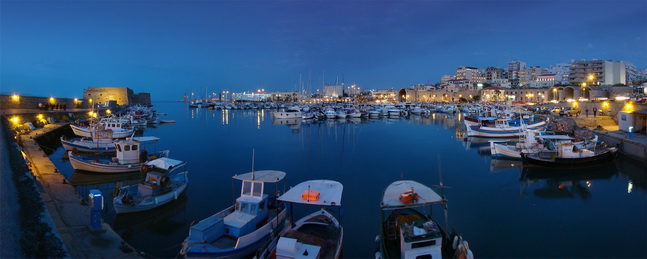
Heraklion is the largest city of Crete and the island’s capital. Its history properly begins in post-Minoan times. Today it is a modern, lively town and an important economic centre. It preserves traces of its long history, and the conquerors who passed through. In recent years, many streets around the centre have become pedestrianized and so link the major monuments of the city. One can go about more readily, free from the rush of traffic. Iraklio’s main sights are wedged within the historic town, hemmed in by the waterfront and the old city walls. Many of the finest buildings line up along the main thoroughfare, 25 Avgoustou, (San Marco Basilica. On the square, just as 25 Augoustou starts to drop down to the Venetian Port, stands San Marco Basilica, built by the Venetians as a cathedral, converted into a mosque by the Turks. – The Loggia. Farther down 25 Augoustou is the Venetian Loggia — originally built in 1541 as a shady meeting place for wealthy aristocrats, and remodelled in 1628 by Morosini. Used as an arsenal (and badly damaged) by the Turks, it took 18 years to restore in the 1960s and ‘70s, and is now Iráklion’s Town Hall.) which skirts the lovely central square, Plateia Venizelou (also called Lion Square after its landmark Morosini Fountain – Ágios Titos. Worth visiting for its flamboyant history and for the serenity of the little tree-dotted square that it dominates, Ágios Titos was built around 961 to celebrate the re-conquest of Iráklion from its Arab rulers for the Byzantine Empire.). East of here, Koraï is the hub of Iraklio’s cafe scene, which leads towards the sprawling Plateia Eleftherias and the archaeological museum nearby. Also do not miss to visit The Tomb of Kazantzákis. Nikos Kazantzákis was one of Greece’s greatest writers. Raised just south of the capital, he chose this spot on Iráklion’s southernmost bastion for his tomb because of its views north across the city to the sea. On a gravestone which is moving in its simplicity is his epitaph (which he chose before his death in 1957)—‘I believe in nothing, I hope for nothing, I am free’.
